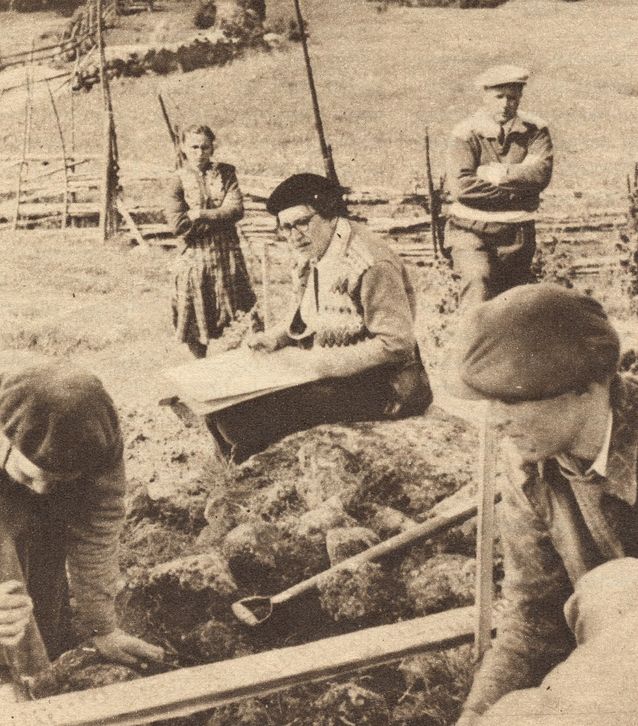Ella Kivikoski
Ella Margareta Kivikoski
Born May 25, 1901, Tammela. Died July 27, 1990, Helsinki
Bachelor of Arts (History), 1930, Master of Arts, 1932, Licentiate of Philosophy (Archaeology), 1939, Doctor of Philosophy, 1940, University of Helsinki
Professor of Finnish and Nordic (until 1968 Scandinavian) Achaeology, University of Helsinki, 1948–69
Docent, Finnish and Nordic Achaeology, University of Helsinki, 1941–48
Supernumerary amanuensis, 1932–33, Amanuensis 1933–47, Head of Division, 1947–48, Muinaistieteellisen toimikunnan esihistoriallinen osasto (‘prehistoric department of the national board for archaeology’)
Member of the editorial board, Acta Archaeologica, 1954–1980
Journalist, Suomen Museo, 1953, 1956–76
Chairwoman, Finnish Assocation for Ancient Monuments, 1962–68
Member, Finnish Academy of Science and Letters, 1949
Honours
Honorary Member, Fibula ry, 1969; Svenska arkeologiska samfundet (‘Swedish archaeological society’), 1973; Finnish Antiquarian Society, 1976
Commander, Order of the White Rose of Finland, 1968
Commander, Order of the Lion of Finland, 1955
Named after Kivikoski
Finnish Antiquarian Society’s medal, 1981
Photo: Museovirasto
Written by Tomas Sjöblom
Translated by John Calton

